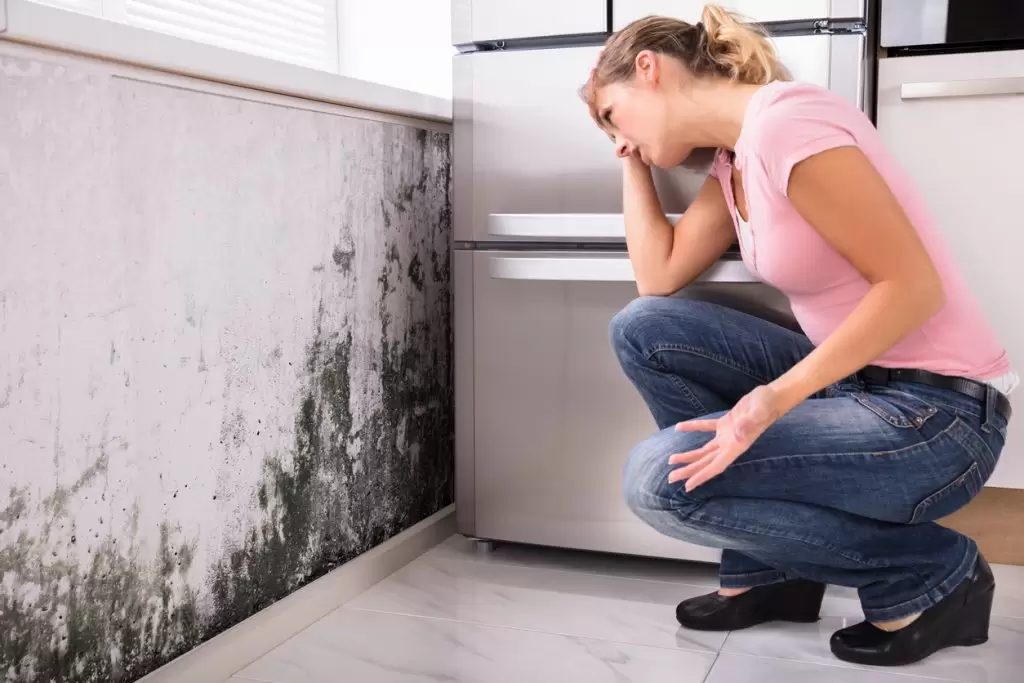Serving Kingman, Bullhead City, and Lake Havasu City
Menu

Water damage can be especially difficult to clean up because it can sink into your home and linger for days if it’s not dried properly. The leftover moisture can compromise not only the structural integrity and weaken the walls and floors, but also cause one of the most troublesome issues–mold. If you aren’t careful and don’t apply preventive measures immediately after the water is cleared, you will have to deal with mold infestation.
Understanding how mold occurs is the first step to preventing it. Mold and mildew are types of fungi that grow in damp and dark places. They’re a common consequence of water damage because excessive moisture can create an ideal environment for them to grow in. After a flood or a massive leak, water can sink into the building materials because oftentimes they are made of porous supplies. The excess moisture or humidity in the air doesn’t allow the water to evaporate completely. The damp and porous building material has enough organic compounds to feed mold and encourage its growth which can happen within 24 to 48 hours of the water disaster. This means you have a very small window to stop mold from growing in your house.
There are many steps you can take immediately after the water damage to discourage mold growth. However, It’s wise to hire a professional like Restoration 1 of Mohave County to handle the task because we have the right tools and equipment to get the job done quickly and efficiently. Here are the steps needed to take to get the best results:
The first step is to remove all the flood water from the area. While you can rent specialized water vacuums to draw the water away or use the traditional bucket to clear the area, professional restoration companies will use commercial equipment, and technicians should be trained and certified in removing water properly. If the water is from a natural flood, sewer backup, and other such disasters, don’t touch it without adequate protective clear. Contaminated water can have dangerous chemicals and pathogens that can harm your health and cause diseases. Clean water from burst pipes and leakages is safe to clear without the use of special equipment. If you are in doubt about the kind of water damage you have incurred, it is best to call a professional restoration company.
Damp rugs and carpets take longer to dry than less porous building materials. It’s a good idea to remove them from the flooded area and steam clean them to eliminate all contaminants and germs. You can dry these carpets and rugs in the sunlight or use industrial vacuums to remove the excess water. This will minimize the chances of mold infestation. Failure to remove the rugs and carpets will cause mold to grow underneath them and begin to spread to the surrounding areas.
Once you’ve removed the carpets and rugs, dry all the wet surfaces as much as you can to prevent ongoing moisture. You can use a dry rag or mop to soak up the water that the vacuum couldn’t remove. You can also rent industrial-sized fans to remove all excess moisture from the room and make sure it dries quickly. If hiring a professional company, this equipment will be set up and used properly to ensure water removal as quickly as possible. As mentioned before, mold can develop in 24 to 48 hours in the right conditions so if you eliminate the excess moisture quickly, you’ll minimize the possibility of mold.
The room’s humidity should remain below 50% in order to prevent mold from forming. You can achieve this with a dehumidifier. If the weather outside is sunny and warm, open all windows and air out your home as you use the dehumidifier. This will ensure your room remains dry after all the excess water is removed. You need to maintain this dryness for a few days after the water damage disaster in order to prevent mold growth. A professional company will perform humidity tests throughout the exposed area to determine if additional water removal is needed.
Once all the excess moisture is removed, you should clean and sanitize all sources. You can purchase over-the-counter cleaning solutions that will eliminate both bacteria and the possibility of mold. You can find these solutions in your local hardware store. You can also clean small pockets of infestations with bleach. If you follow these steps, you should be able to prevent mold growth. Unfortunately, preventive measures don’t always work so if you still see signs of mold growth, you should immediately call a professional to clear it. DIY mold cleaning solutions aren’t very effective and can cause health problems. Professional cleaning will eliminate mold from your environment completely so you can breathe the indoor air without concern.
While it is possible to remove the water yourself as a DIY project, unless you are prepared to rent several industrialized tools and equipment pieces, you should contact a professional like Restoration 1 of Mohave County to clean your water damage and prevent mold from occurring.